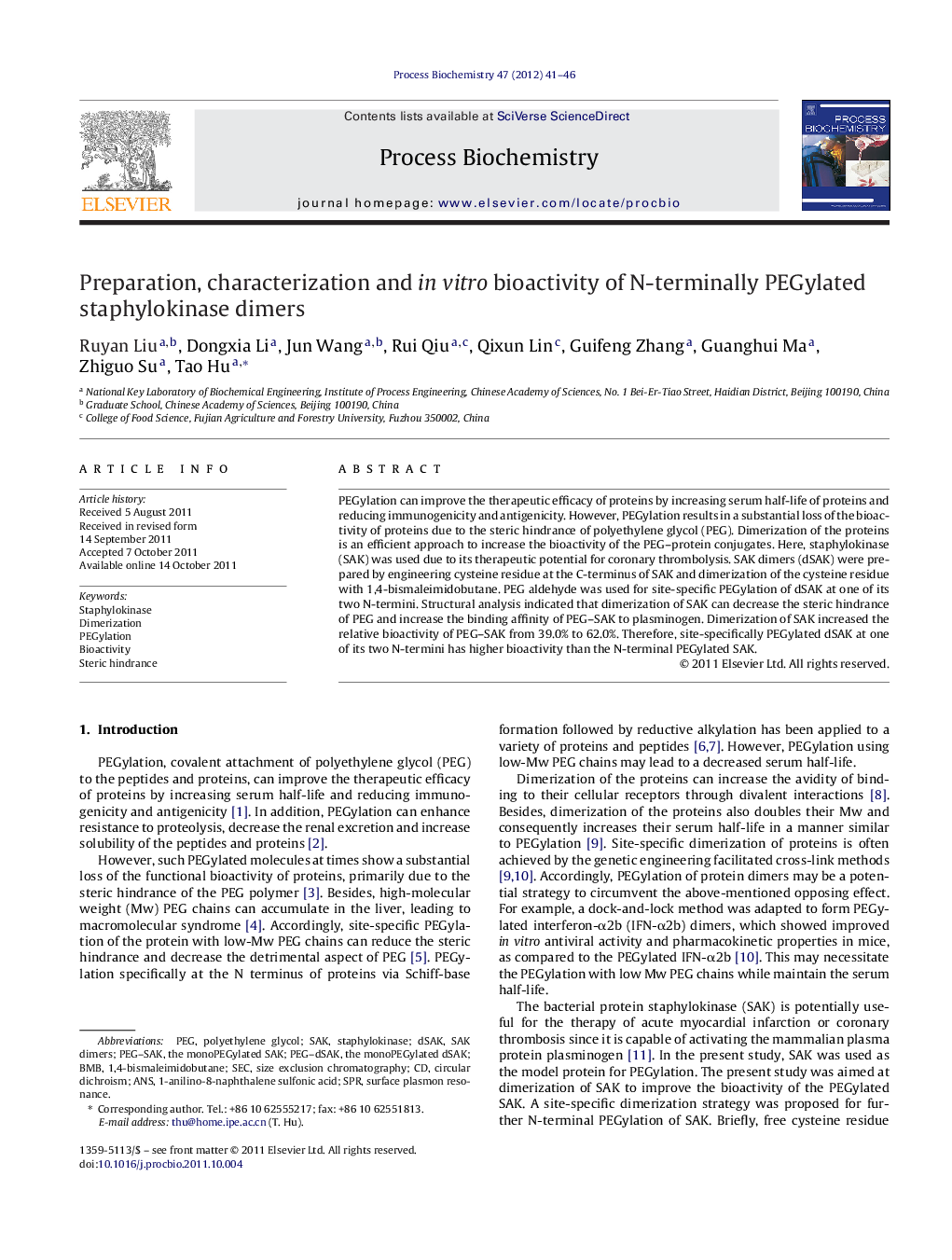| کد مقاله | کد نشریه | سال انتشار | مقاله انگلیسی | نسخه تمام متن |
|---|---|---|---|---|
| 34675 | 45039 | 2012 | 6 صفحه PDF | دانلود رایگان |

PEGylation can improve the therapeutic efficacy of proteins by increasing serum half-life of proteins and reducing immunogenicity and antigenicity. However, PEGylation results in a substantial loss of the bioactivity of proteins due to the steric hindrance of polyethylene glycol (PEG). Dimerization of the proteins is an efficient approach to increase the bioactivity of the PEG–protein conjugates. Here, staphylokinase (SAK) was used due to its therapeutic potential for coronary thrombolysis. SAK dimers (dSAK) were prepared by engineering cysteine residue at the C-terminus of SAK and dimerization of the cysteine residue with 1,4-bismaleimidobutane. PEG aldehyde was used for site-specific PEGylation of dSAK at one of its two N-termini. Structural analysis indicated that dimerization of SAK can decrease the steric hindrance of PEG and increase the binding affinity of PEG–SAK to plasminogen. Dimerization of SAK increased the relative bioactivity of PEG–SAK from 39.0% to 62.0%. Therefore, site-specifically PEGylated dSAK at one of its two N-termini has higher bioactivity than the N-terminal PEGylated SAK.
► Successful N-terminal monoPEGylation of staphylokinase (SAK) dimer.
► Dimerization increased the bioactivity of PEG–SAK from 39% to 62%.
► Improved structural property and binding affinity of the PEG–SAK dimer.
Journal: Process Biochemistry - Volume 47, Issue 1, January 2012, Pages 41–46